| 1 | The copperhead’s swampy cousin |
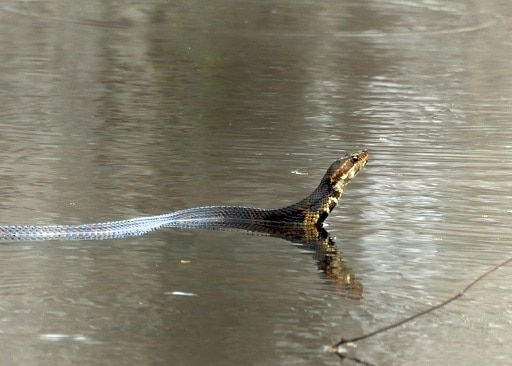
The Agkistrodon genus of vipers numbers 8 worldwide. You have the jet black Mexican cantil of dry, crunchy woodlands in Mexico, which is threatened with extinction. There’s the infamous copperhead, ruler of leafy woodlands in the eastern USA. Then there’s the cottonmouth (Agkistrodon piscivorus), which is closely related to the copperhead but has adapted to live in aquatic environments instead.
Cottonmouths share the dangerous venom of their cousin, but are much murkier in appearance. Instead of golden brown and beige to blend with fallen leaves, they’re a combination of brown and grey in order to disguise themselves in mud. Cottonmouths can be hard to detect, but if you live within their large territory, virtually any bog or swamp could contain them. They appear not just in swamps, but lakes, canals, rivers and even rice fields.
Cottonmouths are found in at least 16 states, possibly 17 if a tiny population in southern Indiana turns out to still exist. In states like Louisiana, Alabama, Mississippi, and Georgia, they’re an unavoidable fact of life. There’s also found all over Florida, although technically, this is now a separate species called the Florida cottonmouth (Agkistrodon conanti).
The northern limit of the cottonmouth lies in southern Illinois, while to the south, they don’t quite reach Mexico, with their southerly limit being the city of Copus Christi, Texas. One thing’s for sure – wherever the cottonmouth lives, it inspires fear and bizarre rumours among the local population.
| 2 | The old boat jumping story |
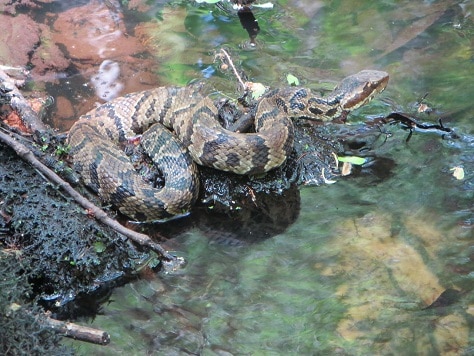
Out of all US snakes, the cottonmouth is probably the one with the highest number of crazy legends and insane rumours orbiting it. The longest enduring of all is that as fishermen sail cautiously down streams in their boats, the cottonmouth will wait quietly on an overhanging branch.
The moment the boat passes below, the cottonmouth will leap from its branch in a murderous rage, landing straight on the wooden deck below. What follows next is a massacre, as the cottonmouth proceeds to slaughter the entire captain and crew, who are usually panicking so wildly that the snake makes easy pickings of them.
This old story is so enduring that many fishermen have abandoned their boats at the mere sight of a snake ahead, or even blown the wooden deck in with a shotgun after hearing someone cry “snake!”. Others are too scared to go anywhere near rivers with confirmed cottonmouth populations.
The truth, of course, is that cottonmouths have never been recorded to do this. They’re decent tree climbers, but almost never use these skills. The real character in the horror stories was the brown watersnake, which often basks on overhanging branches for hours without moving, and does drop onto boats occasionally, but is completely non-venomous.
| 3 | The old water skiing legend |
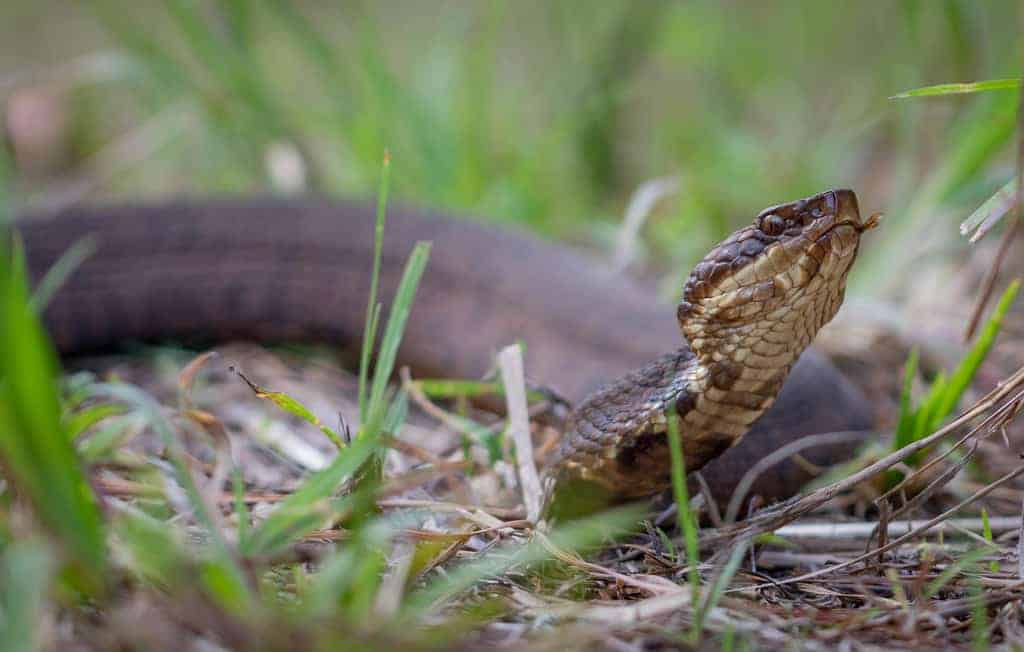
Another terrifying cottonmouth legend involves a water skier, sometimes a mother with 4 kids, or sometimes a much younger girl. The story, relayed by countless lifeguards, is that the girl was being dragged around a lake by a boat, enjoying the adrenaline rush. Suddenly, her line snagged on an old piece of barbed wire fencing.
The girl was sent flying, and had the bad luck to land straight in a breeding ball of cottonmouths, essentially an entire group of cottonmouths writhing together in a terrifying huddle. The snakes bit the girl 40-50 times as she attempted to escape, and when they finally pulled her body to shore, she died just minutes later. Another version involves a young boy yelling at his friends “last one in’s a rotten egg”, who then leapt in and also landed on a writhing cottonmouth ball.
This urban legend is almost as old as the United States itself. Nobody knows where it originally came from. It first circulated weekend tourist spots, then magazines, then viral emails, then forums, and finally social media. The earliest known reference was in a 1967 memoir about Mississippi titled North Toward Home.
Whether anything similar really happened is unknown, but there’s one clue: unlike the common garter snake, the cottonmouth has not once been recorded to form a breeding ball.
| 4 | Stalks humans for miles and miles? |
Another undying myth is that pretty much every snake found in a swamp is a cottonmouth, regardless of state. There’s a phenomenon of Americans in Pennsylvania, New York, and Maryland insisting that their local lake harbours deadly cottonmouths, when the furthest north they’re known to inhabit is Virginia.
Like bears or sharks, the cottonmouth is considered to be a bloodthirsty maniac that has nothing on its mind other than killing people. Stories are legion of cottonmouths pursuing people into gardens, charging after fishermen, and chasing riverside campers until their last breath. Supposedly, the only solution is to run as far and as fast as your legs will carry you. If the cottonmouth wins the race, then all you can do is lie down and pray for a quick death.
Once again, the reality is slightly different. Cottonmouths are actually a slower than average snake, with bulky bodies that lack the nimbleness of a coachwhip. Despite the all-seeing power of the internet, nobody has ever uploaded a non-CGI video of a cottonmouth charging after people. Like most snakes, they’d rather not be bothered at all.
| 5 | Much calmer than believed |
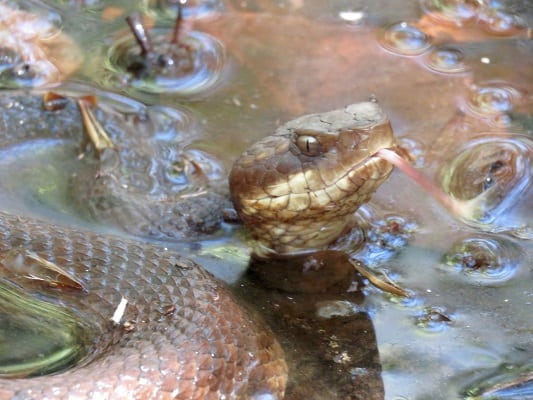
Most old timers in Florida, Louisiana or Texas respond to cottonmouth sightings by heading to their garden shed and grabbing their trusted rusty shovel. But scientific studies have proven that like bears, cottonmouths are just as scared of us as we are of them.
In a 2002 study, Mike Dorcas and Whit Gibbons marched around Florida and encountered 45 cottonmouths. 23 (51%) fled instantly, while 78% of the remainder opened their mouths wide in a defensive display, showing the signature white mouth. When 36 of the cottonmouths were picked up using a mechanical arm, only 13 (36%) bothered to bite down. Dorcas and Gibbons even stepped on 21 of the cottonmouths’ tails, which caused just 1 to bite their shoes.
Rather than chasing fishermen, the cottonmouths were particularly likely to flee (20% of snakes) when next to a body of water. 24% released a foul-smelling musk, and 33% vibrated their tails, in a weaker version of a rattlesnake’s rattle. All evidence points to a defensive snake rather than an unhinged loose cannon.
| 6 | Diet: leans towards frogs |
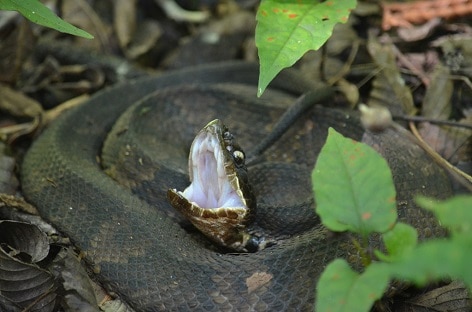
Cottonmouths have a massively varied diet, but equally, they have to dodge a vast amount of predators. The combatants and contenders are endless in the swampy worlds in which they live. For example, cottonmouths often fall victim to snapping turtles, a notoriously aggressive turtle which bites and thrashes whenever picked up. They have to dodge the watchful eyes of whooping cranes and blue herons, waiting patiently overhead.
Like mud snakes, American alligators are often on their tail. They even have to dodge hungry fish. The cottonmouth equivalent of a great white shark is the greedy-looking largemouth bass, a prize catch of local fishermen (possibly the same fishermen who think that cottonmouths are trying to murder them).
As for their own diet, cottonmouths will swallow rats and weasels with no thought, and birds like American sparrows. They consume many species of snake, including mud snakes, corn snakes, plainbelly watersnakes, brown watersnakes, western ribbon snakes, yellow-bellied kingsnakes, and western diamondback rattlesnakes.
But their favourite meals are undoubtedly frogs, and particularly frogs of the Lithobates genus, AKA the American water frogs. Members they’ve been spotted eating include pig frogs, green bullfrogs, American bullfrogs, pickerel frogs, and southern leopard frogs.
| 7 | Bites are rarely fatal |
Cottonmouths easily defeat their copperhead relative for pound to pound venom potency. The LD50 toxicity score is 2.04mg, compared to only 10.9mg for copperheads. The venom yield is also in another league, at 80-170mg per bite 40-75mg. However, cottonmouths are far weaker than the deadliest rattlesnake species, including the tiger rattlesnake at LD50 0.06mg, and the Mojave rattlesnake at 0.18mg.
If a cottonmouth does decide to invade your fishing boat one stormy night, then you’ll probably live to tell the tale. The last notable death occurred in 1971, when Bryan L. Bristow was bitten on the hand while collecting snakes into a bag in Louisiana. A death in 2015 was deemed inconclusive, as 37 year old Gilbert De Leon had a lethal level of oxycodone in his system at the time.
Cottonmouth venom clearly specialises in cytotoxic powers, the ability to destroy cell walls, cell membranes, and cell contents. A study monitored 32 cottonmouth bites from 2013-2017, and found that swelling occurred in all patients, which was severe enough in 65% to cross one major joint.
The dangers were mostly local, as the systemic effects were limited to diarrhoea (one victim) and vomiting (16%). Cottonmouth venom is almost completely missing the brain-frazzling neurotoxins of coral snakes and cobras.
| 8 | They CAN bite underwater |
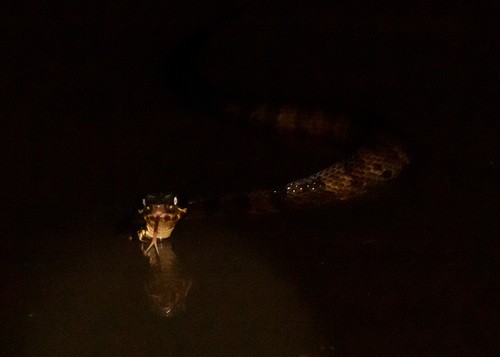
Not every cottonmouth myths works in a positive way. Another classic is that they can’t bite while underwater, and that diving below the surface would be a smart escape strategy. In reality, cottonmouths are more than capable of biting anywhere (except maybe a volcano crater).
Cottonmouths are nocturnal, which is another difference to the oft-confused brown watersnake (which is diurnal). Their hunting strategy is primarily ambush, lurking for hours in thick swampside weeds for a frog to appear.
Female cottonmouths lay live young rather than eggs, in medium quantities of 6-20. It’s believed that baby cottonmouths stick with their mothers for a few days after birth. Males are violent in their attempts to conquer a female, wrestling with other males like a drunk in a bar, so that the victor takes the spoils. Sometimes, the males won’t touch each other, but will instead perform a combat dance where they slither back and forth in front of females, to prove their cottonmouth prowess.
The record lifespan for a cottonmouth was 20.5 years, but first things first, they have to make it to adulthood without being eaten, whether by a snapping turtle or watchful heron. On average, only 2-3 hatchlings from each cottonmouth clutch survive.
| 9 | Origin of the name |
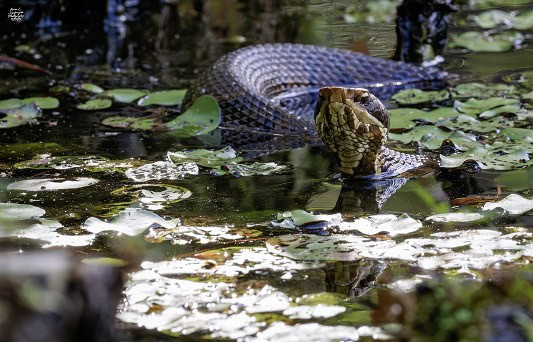
Cottonmouths are a snake of endless names, just as they have endless legends. The Latin term is Agkistrodon piscivorus, which references the word “piscivorous” for fish-eating. The various localisms around the USA include swamp moccasin, snap-jaw, gapper, and swamp lion.
The cottonmouth name simply comes from the pale white insides of its mouth, which they gape at passers-by in a supposedly intimidating display. “Snap-jaw” or “trap-jaw” comes from the cottonmouth’s tendency to snap its mouth shut like a mouse trap the moment anybody touches them.
This snowy white mouth also doubles up as a near infallible ID trick. The thick, muscular body is another good sign, which is actually so thick that 1970s herpetologists struggled to hold onto them when extracting venom (before better techniques were invented).
Another sign is the huge, spade-shaped head, which is very distinct from the neck. Cottonmouths have vertical pupils, unlike its brown watersnake lookalike. Their eyes are spaced relatively far apart, separated by their bulky snout. Their colour scheme is black, brown and olive, and younglings have similar tones, except for a yellow tip of the tail (instead of black), and a brighter overall appearance.
| 10 | Secret base: the cottonmouth acres |
Back in 2017, while working on a wetland restoration project in North Carolina, Frederick Boyce had the luck (or perhaps misfortune) to stumble across a major cottonmouth stronghold. This swampy area had at least 100 individuals compressed into a 25 acre zone, and these were only the ones he observed. He dubbed the spot the Cottonmouth Acres, and kept the exact location a strict secret for conservation purposes.
Not only were there loads of cottonmouths, but they turned out to be unusually massive. On May 10th 2021, Boyce uploaded a picture to Facebook of a monster, a cottonmouth measuring at least 150cm, and possibly up to 180cm (6 feet). When you considered its massively thick body, it looked even larger.
Rather than charging at Boyce (as the legends would predict), the cottonmouth was slithering very slowly out of a boggy ditch and up the weed-covered bank. The winds were blowing, the skiers were darkening, and a thunderstorm was rolling in, forcing the cottonmouth to get moving.
8 days later, Boyce came across the same massive yet lazy cottonmouth barely any distance from its original location. It was now resting calmly under a large tree, on the ditch’s opposite shore. 150-180cm is already massive, but locals in North Carolina claim to have encountered 7 footers.
The plot thickens further when you consider that the official largest cottonmouth of all time was also found in North Carolina. It measured 188.0cm, and was discovered in the wild Dismal Swamps region straddling the North Carolina-Virginia border. Could this have been the exact same area where Boyce’s monster cottonmouth was found? It’s possible that the Cottonmouth Acres are the cottonmouth capital of the entire world, a nightmare stronghold which no sane human would ever venture into. The location is still a secret, and we don’t recommend trying to find it, for health and safety reasons of course, but it’s out there somewhere.
| 11 | They have their own road |
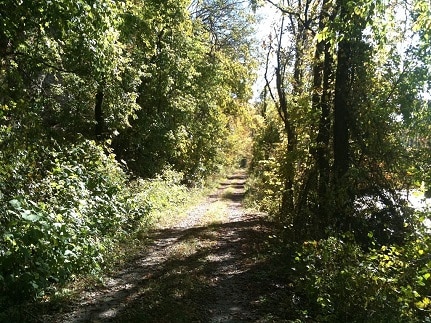
Many Canadian roads are closed seasonally because of hungry bears, but Illinois boasts the world’s only road to be closed because of annual snake crossings. This road lies in Shawnee National Forest in southern Illinois, and bisects two prime spots of snake habitat.
To the west lies LaRue swamp, a humid bog which is perfect for the semi-aquatic cottonmouth to dwell in all summer. To the east lies the perfect winter hibernation site: towering limestone bluffs with numerous nooks and crannies, which are sheltered from the wind and retain warmth highly effectively.
This road is officially closed from March 15th to May 15th, and again from September 1st to October 30th, as the seasonal snake migrations can take up to 2 months. The road isn’t awash with vipers like a long-sealed Egyptian tomb, but it’s common to find 20 or more cottonmouths slithering around at once (pedestrians are still permitted).
In the early 1970s, locals were angry at the closure, as they had long enjoyed the sport of seeing how many cottonmouths they could run over. Part of the problem is that the cottonmouths are rarely in a rush. Because the dark tarmac absorbs sunlight so well, it makes Snake Road (real name LaRue road) the perfect place for basking. Copperheads and timber rattlesnakes are also seen on Snake Road, but the cottonmouth is the most numerous species.
